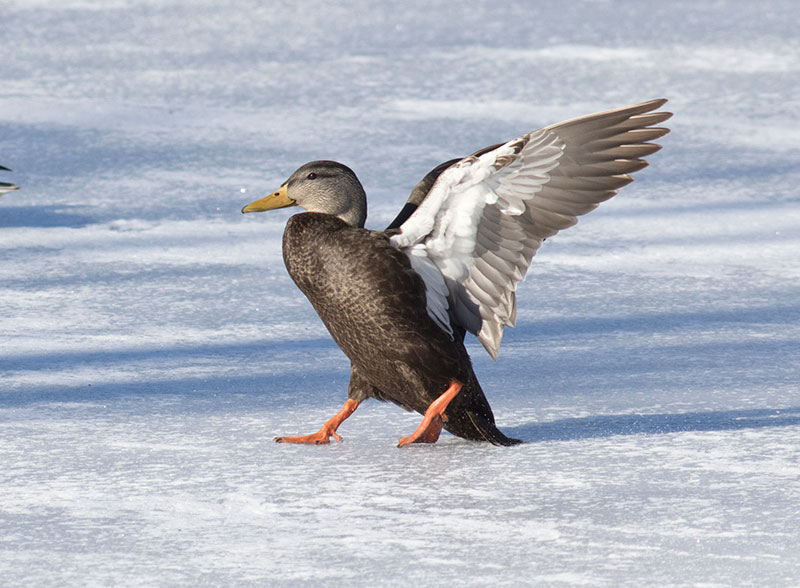American Black Ducks
1/21/18
By David Brown
The American black duck, Anas rubripes, is a dabbling duck of eastern North America. Black ducks are similar to female mallards but are a darker shade of brown. Black ducks are the same size as mallards with a length of 23 inches and a 35-inch wingspan. Males and females are similar but adult males have a bright yellow bill whereas females have a duller olive bill. Black ducks have a white underwing that contrasts with the dark body. Mallards have white tail feathers whereas black ducks do not. Mallards also have an obvious white border around the speculum, the patch of iridescent blue feathers on the secondary feathers of the wing. Black ducks frequently hybridize with mallards and hybrids show intermediate characteristics such as a partially green head.

American Black Duck
The summer range of the American black duck is the mid-Atlantic coast, New England, the Great Lakes, and eastern Canada. The winter range is most of the eastern United States with large concentrations in coastal wetlands in the mid-Atlantic region from New York to North Carolina. Black ducks are widespread but sparse breeders in Pennsylvania and have faced large historical declines. Black ducks are uncommon in Lycoming County most of the year. They can often be found with large groups of mallards. They are usually absent during the summer, though there are a few summer records from the breeding bird atlas.
Black ducks can be found in both freshwater and saltwater. They nest in wetlands and tidal marshes. They nest on the ground rather than in cavities. They mainly feed by tipping down into the water but will sometimes dive to reach food in deeper water. The main diet of black ducks is plants and aquatic invertebrates.
American black ducks can be found on rivers, ponds, lakes, and wetlands in our area. Spots where they are often seen include the Susquehanna River near the Williamsport dam, Indian Park pond in Montoursville, and Rose Valley Lake when it is thawed during spring and fall migration. As temperatures remain cold this winter look for large congregations of waterfowl in the remaining areas of open water.